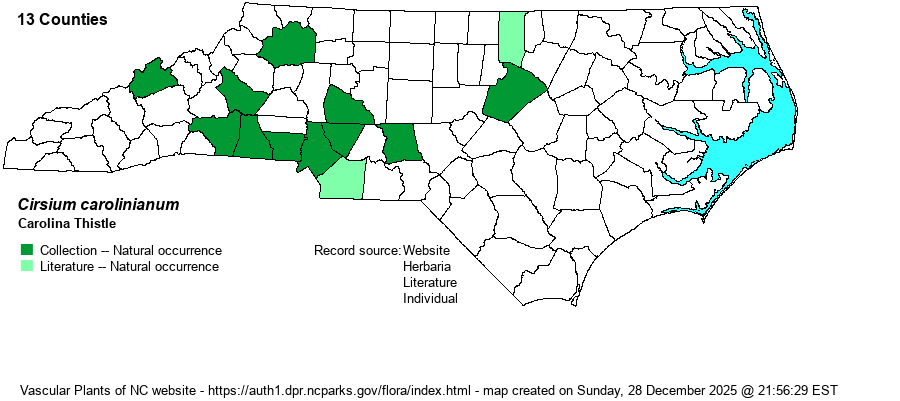| Author | (Walter) Fernald & Schubert | |
| Distribution | Piedmont and low Mountains, with large gaps that appear to be real; most widespread in the southwestern portion of the Piedmont, including in foothills ranges (South Mountains, etc.)
Northern VA to southern OH and MO, south to SC, GA, AL, TX. | |
| Abundance | Locally uncommon in the southwestern portion of the Piedmont, but rare elsewhere in the Piedmont, and seemingly absent in the north-central counties. The only Mountain record appears to be from Madison County. This is a State Endangered species. Because several populations are under known threats of destruction (road widening, clearing for development, etc.), in late 2022 the NCNHP moved the State Rank from S2 to a now dire S1. | |
| Habitat | Slopes in mesic to dry open forests and woodlands, roadsides through the same habitats, barrens, and "prairie" openings. Prefers mafic or calcareous substrates. |
| Phenology | Flowering and fruiting April-June. | |
| Identification | This slender spring-flowering thistle grows 2-6 feet tall and is not likely confused with any other thistle, partly owing to its flowering period. Sandhill Thistle (C. repandum) blooms in late spring and early summer but is only half as tall and occurs in dry to xeric sandy soil of pinelands. As with most other thistles, it has bright purple-pink heads. | |
| Taxonomic Comments | None
| |
| Other Common Name(s) | Spring Thistle, Soft Thistle | |
| State Rank | S1 | |
| Global Rank | G5 | |
| State Status | E | |
| US Status | | |
| USACE-agcp | | |
| USACE-emp | | |

